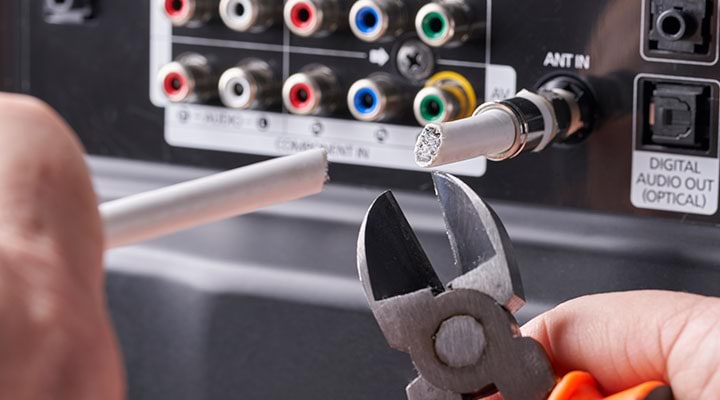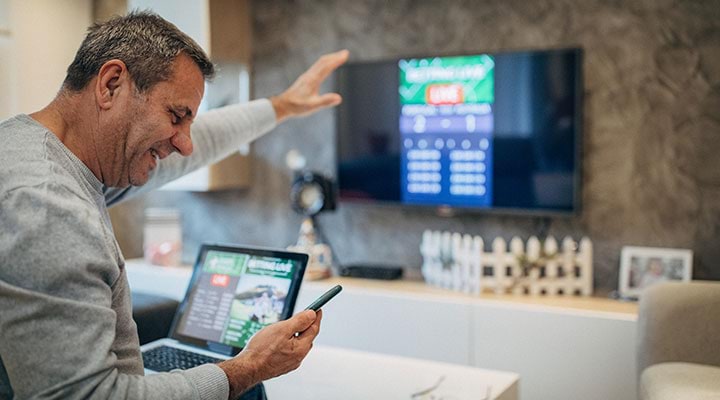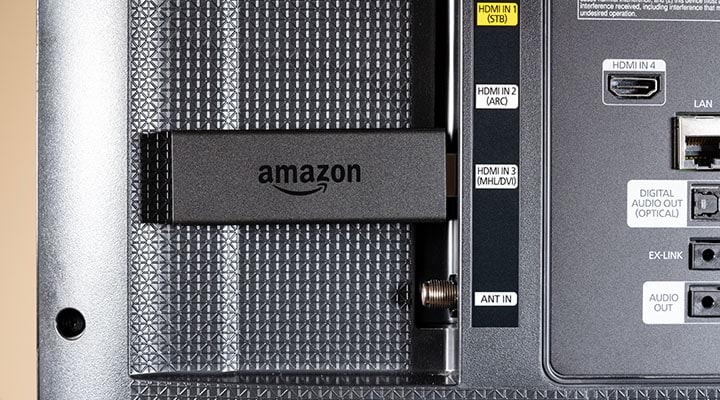Cord cutting 101: Is cutting cable right for you?
Streaming and on-demand services are hotter than ever. Many people are choosing to “cut the cord” to cable TV altogether and replace it with newer viewing options.
Yet this decision can be confusing, with so many new terms and technology to wade through. To help eliminate the confusion, let’s look at the most popular types of streaming services, then a few of the top benefits and potential drawbacks of cutting the cable cord. Knowing more about your options could help you decide whether cutting the cord is the right choice for you.
Streaming services
When you cut the cord to cable, most of your content will be in the form of two types of streaming services: video on demand and live streaming. Streaming video on demand is when you subscribe to a service provider and open it at any time to select a show or movie and watch it. You can start and stop playing your chosen content at your convenience. Some popular examples are Hulu, Netflix, HBO Now, Amazon Video and Disney+.
Live streaming, on the other hand, presents content determined by the provider, similar to traditional TV channels that decide what to broadcast, and when. You turn it on and stream the available content when you want to watch particular programming. This kind of streaming service is great for watching sports, live events or news. Examples of providers include YouTube TV, Philo, Fubo TV, Sling TV and Vidgo, among many others.
Benefits of cutting the cord
There are a number of significant benefits to cord cutting, including cost savings, broader selections of content, and convenience. Many cord cutters will install an antenna to add local broadcast stations to further enhance their viewing options.

Cost savings
Let’s consider an average cable household that spends about $100 per month on their cable television bill. Cutting the cable cord would give them back that amount to put toward signing up for on-demand video streaming services. With a Netflix subscription and an Amazon Video subscription, they get the two hottest streaming options for under $30 a month (prices are approximate). Even if prices go up slightly over time, you don’t have to be an accounting whiz to see that’s a significant savings!
In thinking about your budget, just remember to factor in the cost of getting the devices or equipment you need, as well as upgrading your internet speed if you don’t have a broadband connection of at least 20 Mbps (recommended). Also, be mindful of the number of streaming services you add, as each service will increase your monthly cost. Still, even with all expenses taken into account, most people come out way ahead in terms of their yearly home entertainment costs, as compared to traditional cable TV packages.
Convenience
Savings aren’t the only reason to switch from cable to streaming TV. It’s also more convenient in many ways:
- Live streaming and on-demand streaming content give you 24/7 access from just about anywhere.
- If you’re going on a trip and won’t have access to WiFi or mobile data, you can often download movies to a tablet or phone to watch during flights or long drives.
- Many live streaming service providers offer the added benefit of a cloud-based digital video recorder (DVR), which allows you to save content (movies, shows, etc.) on an online platform.
Personalized offerings
It’s true that cable and satellite packages may offer hundreds of channels to watch, but most people only watch a narrow slice of the channels that are included. Streaming services have the added benefit of giving you personalized suggestions of what to watch next, based on your previous choices and ratings. These “smart” services can help you find shows and movies custom- selected to fit your preferences. Plus, some of the hottest, best-rated shows today are original content produced by streaming services and available exclusively on their platforms.
Live sports
For some people, cutting the cord gets them a better sports viewing experience. Live streaming sports services, such as YouTube Live, Fubo TV, ESPN+ and others, allow you to select and watch your favorite teams and events at a fraction of the cost of traditional TV services.

Local programming
Some people worry that moving to streaming TV means they will lose access to local programming. One popular option today is to use a streaming service in combination with an over the air (OTA) antenna to receive local broadcast channels like NBC, CBS, ABC, FOX, PBS, CW and primetime sports for free. In some areas of the country, you could get up to 50 channels at no cost. There is a broad variety of antennas available, they are relatively inexpensive, and most are easy to install on your own.
Potential cons of cutting the cord
As you decide whether to cut the cord on cable, there are a few potential drawbacks to consider. For many people, these are small compared to the benefits, but it all depends on your personal preferences.
Streaming subscriptions could add up
Subscribing to more than a handful of streaming service providers, whether on-demand or live, might not save you much money in the end. For instance, if you pay a monthly fee of roughly $10-15 each for more than six or seven services, your bill may not be much lower than a cable package. There is one way, though, to help keep these costs down through “skinny” bundles.
Skinny bundles package together a smaller number of live streaming channels compared to what a cable company would usually provide. So instead of having 260 channels, a skinny bundle might give you 10 or 15 live channels, and the savings can be significant. Depending on your viewing habits, this might be all you need, and you’ll get it for a significantly lower price than a full cable package. A few examples of streaming service providers who offer skinny bundles are Sling TV, Fubo TV and Philo, and most providers offer a free trial, so you can decide if it works for you before you pay.
Special equipment needed
If you cut the cord to cable, be aware you may need to buy some new equipment before watching the latest season of your favorite show. It’s true that you can log in to a streaming site or app from a laptop or tablet, which for some viewers might be sufficient. However, if you want a more sophisticated viewing experience in your family room, you will want to invest in a smart TV or a streaming device, which come with a huge catalog of built-in apps.
Streaming devices, such as Roku, Apple TV, Chromecast and Amazon Fire, plug into your TV’s HDMI port and give you access to every streaming service you can think of. Prices for these devices can run the gamut from only $30 all the way up to $200, depending on the brand and where you buy. Typically, however, this is a one-time cost – once you own the device, you don’t have to pay a monthly fee to use it.

The other potential cost to consider is that of an over the air (OTA) antenna, though this is usually a minimal expense. The antenna itself can cost as little as $20 (more if you need professional installation), and using an OTA in addition to a streaming service could save you a bundle compared to a premium satellite or cable TV package.
Internet limitations
You’ll need to be sure you have the internet bandwidth to support streaming, especially if multiple viewers may want to watch programs at the same time in your home. Most streaming devices run on high definition (HD), which requires between 5 and 8 Mbps for each device streaming at the same time. That is on top of any other internet activities already going on in your household, including working or schooling from home, gaming, etc. If your internet connection isn’t adequate, you could encounter frustrating buffering and lag times when you try to stream video, so only cut the cord if you’ve got a robust internet connection.
Are you ready to cut the cord?
If you realize you’re paying a cable company for hundreds of channels you never watch, you could cut your costs considerably and still end up with more quality viewing choices than ever. With a little research and planning, you can cut the cord to cable and never look back. If you’re ready to cut the cord, we can help you get started with streaming TV. Then, be sure to check out our TV recommendation tool, which will help you choose the TV service that best fits you and your family's needs. Pick the channels and services that are most important to you, and we’ll make a recommendation based on your choices. It’s easy and fun to build your own cable-free television plan!
Was this information helpful?
Support topics





.png)




